 W
WAbukuma (阿武隈) was the sixth and last of the Nagara class of light cruisers completed for the Imperial Japanese Navy (IJN), and like other vessels of her class, she was intended for use as the flagship of a destroyer flotilla. She was named after the Abukuma River in the Tōhoku region of Japan. She saw action during World War II in the Attack on Pearl Harbor and in the Pacific, before being disabled in the Battle of Surigao Strait in October 1944, then bombed and sunk by the United States Army Air Forces (USAAF) off the coast of the Philippines.
 W
WAdmiral Scheer [ˌatmiˈʁaːl ʃeːɐ̯] was a Deutschland-class heavy cruiser which served with the Kriegsmarine of Nazi Germany during World War II. The vessel was named after Admiral Reinhard Scheer, German commander in the Battle of Jutland. She was laid down at the Reichsmarinewerft shipyard in Wilhelmshaven in June 1931 and completed by November 1934. Originally classified as an armored ship (Panzerschiff) by the Reichsmarine, in February 1940 the Germans reclassified the remaining two ships of this class as heavy cruisers.
 W
WAikoku Maru (愛国丸) was an armed merchant cruiser of the Imperial Japanese Navy in World War II. The ship entered service in 1940, the ship was later converted to an ammunition ship. She was destroyed in February 1944.
 W
WAkashi (明石) was a Suma-class cruiser protected cruiser of the Imperial Japanese Navy. She was a sister ship to Suma. The name Akashi comes from an ancient name for a portion of the coastline near the modern city of Kobe in Hyōgo Prefecture.
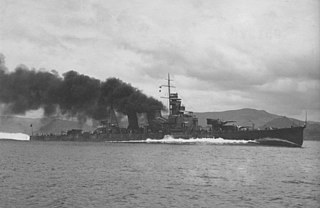 W
WAoba was the lead ship in the two-vessel Aoba class of heavy cruisers in the Imperial Japanese Navy. Launched in 1926 and heavily modernized in 1938-40, Aoba initially served as a patrol craft, largely along the China coast, and saw extensive service during World War II. Repeatedly heavily damaged and repaired, she was finally crippled by bombing and settled on the bottom of shallow Kure harbor in April 1945; two raids in late July reduced her to an unsalvageable hulk. During the attack on July 24, 1945, future Vice admiral Dick H. Guinn dropped the 2,000 lb bomb, which contributed to the sinking of that vessel.
 W
WHMS Aurora was an Arethusa-class light cruiser of the Royal Navy. She was built by Portsmouth Dockyard, with the keel being laid down on 27 July 1935. She was launched on 20 August 1936, and commissioned 12 November 1937.
 W
WAzuma (吾妻) was an armored cruiser built for the Imperial Japanese Navy (IJN) in the late 1890s. As Japan lacked the industrial capacity to build such warships herself, the ship was built in France. She participated in most of the naval battles of the Russo-Japanese War of 1904–05 and was lightly damaged during the Battle off Ulsan and the Battle of Tsushima. Azuma began the first of five training cruises in 1912 and saw no combat during World War I. She was never formally reclassified as a training ship although she exclusively served in that role from 1921 until she was disarmed and hulked in 1941. Azuma was badly damaged in an American carrier raid in 1945, and subsequently scrapped in 1946.
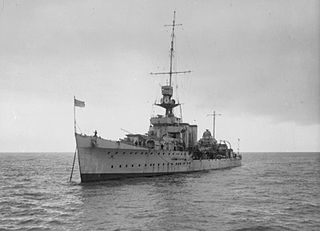 W
WHMS Calcutta was a C-class light cruiser of the Royal Navy, named after the Indian city of Calcutta. She was part of the Carlisle group of the C-class of cruisers. She was laid down by Vickers Limited at Barrow-in-Furness in 1917 and launched on 9 July 1918. Calcutta was commissioned too late to see action in the First World War and was converted to an anti-aircraft cruiser in 1939. Calcutta served during the Norwegian Campaign and the evacuation from Dunkirk in 1940. She was used to escort allied convoys across the Mediterranean and was sunk on 1 June 1941 by Luftwaffe aircraft off Alexandria, Egypt.
 W
WChao Ho was the lead ship of a class of her class of training protected cruisers originally built for the Manchu Qing Dynasty.
 W
WChervona Ukraina was an Admiral Nakhimov-class light cruiser of the Soviet Navy assigned to the Black Sea Fleet. During World War II, she supported Soviet forces during the Sieges of Odessa and Sevastopol before being sunk at Sevastopol on 12 November 1941 by German aircraft. She was raised in 1947 and was used as a training hulk before becoming a target ship in 1950.
 W
WUSS Chicago (CA-29) was a Northampton-class cruiser of the United States Navy that served in the Pacific Theater in the early years of World War II. She was the second US Navy ship to be named after the city of Chicago. After surviving a midget submarine attack at Sydney Harbour and serving in battle at the Coral Sea and Savo Island in 1942, she was sunk by Japanese aerial torpedoes in the Battle of Rennell Island, in the Solomon Islands, on 30 January 1943.
 W
WChikuma was the second and last vessel in the Tone class of heavy cruisers in the Imperial Japanese Navy. The ship was named after the Chikuma River, in Nagano prefecture of Japan. Entering service in 1939, Chikuma saw battle during World War II in the Pacific. She was scuttled on 25 October 1944 after the Battle off Samar.
 W
WHMS Cornwall, pennant number 56, was a County-class heavy cruiser of the Kent sub-class built for the Royal Navy in the mid-1920s. The ship spent most of her pre-World War II career assigned to the China Station. Shortly after the war began in August 1939, she was assigned to search for German commerce raiders in the Indian Ocean. Cornwall was transferred to the South Atlantic in late 1939 where she escorted convoys before returning to the Indian Ocean in 1941. She then sank the German auxiliary cruiser Pinguin in May. After the start of the Pacific War in December 1941, she began escorting convoys until she was transferred to the Eastern Fleet in March 1942. The ship was sunk on 5 April by dive bombers from three Japanese aircraft carriers during the Indian Ocean Raid.
 W
WHMS Coventry was a C-class light cruiser of the Royal Navy, named after the English city of Coventry. She was part of the Ceres group of the C-class of cruisers.
 W
WHMS Curlew was a C-class light cruiser built for the Royal Navy during World War I. She was part of the Ceres sub-class of the C class. The ship survived World War I to be sunk by German aircraft during the Norwegian Campaign in 1940.
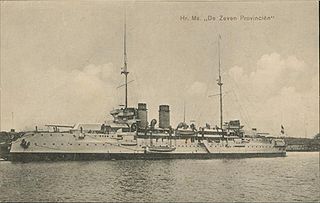 W
WHNLMS De Zeven Provinciën was a Royal Netherlands Navy coastal defence ship in service from 1910 until 1942. It was a small cruiser-sized warship that sacrificed speed and range for armor and armament. She was armed with two 283 mm, four 150 mm, ten 75 mm, four 37 mm guns, in addition to a few 75 mm mortars. She was 101.5 metres (333 ft) long, had a beam of 17.1 metres (56 ft) and a draft of 6.15 metres (20.2 ft), and displaced 6,530 tons. She had a crew of 448 and was able to reach 16 knots.
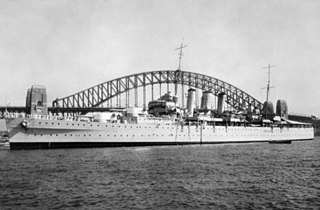 W
WHMS Dorsetshire was a County-class heavy cruiser of the British Royal Navy, named after the English county, now usually known as Dorset. The ship was a member of the Norfolk sub-class, of which Norfolk was the only other unit; the County class comprised a further eleven ships in two other sub-classes. Dorsetshire was built at the Portsmouth Dockyard; her keel was laid in September 1927, she was launched in January 1929, and was completed in September 1930. Dorsetshire was armed with a main battery of eight 8 in (200 mm) guns, and had a top speed of 31.5 knots.
 W
WDupleix was a French heavy cruiser of the Suffren class, that saw service during World War II. She was named for the 18th century Governor-General of French India, Joseph François Dupleix.
 W
WHMS Fiji was the lead ship of the Fiji-class light cruisers built for the Royal Navy shortly before the Second World War. Completed in mid-1940, she was initially assigned to the Home Fleet and was detached to escort a force tasked to force French West Africa to join the Free French. The ship was torpedoed en route and required six months to be repaired. Fiji was then assigned to Force H where she helped to escort convoys to Malta. The ship was transferred to the Mediterranean Fleet in early May 1941. After the Germans invaded Crete a few weeks later, she was sunk by German aircraft on 22 May after having fired off all of her anti-aircraft ammunition.
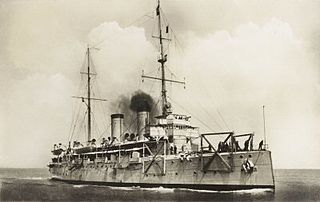 W
WHNLMS Gelderland was a Holland-class cruiser of the Royal Netherlands Navy. During its career in the Dutch Navy it was most notable for being the ship Queen Wilhelmina sent to Portuguese East Africa to transport Paul Kruger to Europe during the Second Boer War. The ship was taken over by the Germans during World War II and renamed Niobe. She was sunk in Kotka harbour in Finland on 16 July 1944.
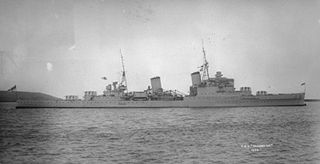 W
WHMS Gloucester was one of the last batch of three Town-class light cruisers built for the Royal Navy during the late 1930s. Commissioned shortly before the start of World War II in August 1939, the ship was initially assigned to the China Station and was transferred to the Indian Ocean and later to South Africa to search for German commerce raiders. She was transferred to the Mediterranean Fleet in mid-1940 and spent much of her time escorting Malta Convoys. Gloucester played minor roles in the Battle of Calabria in 1940 and the Battle of Cape Matapan in 1941. She was sunk by German dive bombers on 22 May 1941 during the Battle of Crete with the loss of 722 men out of a crew of 807. Gloucester acquired the nickname "The Fighting G" after earning five battle honours in less than a year.
 W
WThe French cruiser Gueydon was the name ship of her class of armoured cruisers built for the French Navy in the 1890s.
 W
WHMS Hector was an armed merchant cruiser of the Royal Navy. Initially built as a cargo liner, she was requisitioned by the Admiralty during the Second World War. She was sunk in a Japanese air attack in 1942 and was later raised and scrapped.
 W
WIwate (磐手) was the second and last Izumo-class armored cruiser built for the Imperial Japanese Navy (IJN) in the late 1890s. As Japan lacked the industrial capacity to build such warships herself, the ship was built in Britain. She participated in most of the naval battles of the Russo-Japanese War of 1904–05. The ship was moderately damaged during the Battle of Port Arthur, the Battle off Ulsan, and the Battle of Tsushima. Iwate played a minor role in World War I and began the first of her many training cruises for naval cadets in 1916, a task that would last until the end of 1939. The ship continued to conduct training in home waters throughout the Pacific War. Iwate was sunk by American carrier aircraft during the attack on Kure in July 1945. Her wreck was refloated and scrapped in 1946–47.
 W
WIzumo was the lead ship of her class of armored cruisers built for the Imperial Japanese Navy (IJN) in the late 1890s. As Japan lacked the industrial capacity to build such warships itself, the ship was built in Britain. She often served as a flagship and participated in most of the naval battles of the Russo-Japanese War of 1904–05. The ship was lightly damaged during the Battle off Ulsan and the Battle of Tsushima. Izumo was ordered to protect Japanese citizens and interests in 1913 during the Mexican Revolution and was still there when World War I began in 1914.
 W
WJean de Vienne was a French light cruiser of the La Galissonnière class. During World War II, she remained with Vichy France. She was named for Jean de Vienne, a 14th-century French knight, general and admiral during the Hundred Years' War.
 W
WKashii was the third and final vessel completed of the three light cruisers in the Katori class, which served with the Imperial Japanese Navy (IJN) during World War II. The ship was named after a noted Shinto shrine in Fukuoka, Japan.
 W
WKasuga was the name ship of the Kasuga-class armored cruisers of the Imperial Japanese Navy, built in the first decade of the 20th century by Gio. Ansaldo & C., Sestri Ponente, Italy, where the type was known as the Giuseppe Garibaldi class. The ship was originally ordered by the Argentine Navy during the Argentine–Chilean naval arms race, but the lessening of tensions with Chile and financial pressures caused the Argentinians to sell her before delivery. At this time tensions between the Empire of Japan and the Russian Empire were rising, and the ship was offered to both sides before she was purchased by the Japanese.
 W
WKinu (鬼怒) was the fifth of the six ships completed Nagara-class light cruiser in the Imperial Japanese Navy, named after the Kinu River in Tochigi prefecture Japan. She was active in World War II in various campaigns in Malaya, the Dutch East Indies and New Guinea before being sunk by United States Navy carrier-based aircraft in the Philippines in 1944.
 W
WKinugasa was the second vessel in the two-vessel Aoba class of heavy cruisers in the Imperial Japanese Navy. The ship was named after Mount Kinugasa, located in Yokosuka, Kanagawa, Japan.
 W
WKiso (木曾) was the fifth and last of the five Kuma-class light cruisers, which served with the Imperial Japanese Navy during World War II. She was named after the Kiso River in central Honshū, Japan.
 W
WKönigsberg was a German light cruiser that was operated between 1929 and April 1940, including service in World War II. She was the lead vessel of her class and was operated by two German navies, the Reichsmarine and the Kriegsmarine. She had two sister ships, Karlsruhe and Köln. Königsberg was built by the Kriegsmarinewerft in Wilhelmshaven; she was laid down in April 1926, launched in March 1927, and commissioned into the Reichsmarine in April 1929. She was armed with a main battery of nine 15 cm SK C/25 guns in three triple turrets and had a top speed of 32 knots.
 W
WKöln was a light cruiser, the third member of the Königsberg class that was operated between 1929 and March 1945, including service in World War II. She was operated by two German navies, the Reichsmarine and the Kriegsmarine. She had two sister ships, Königsberg and Karlsruhe. Köln was built by the Deutsche Werke shipyard in Kiel; she was laid down in August 1926, launched in May 1928, and commissioned into the Reichsmarine in 15 January 1930. She was armed with a main battery of nine 15 cm SK C/25 guns in three triple turrets and had a top speed of 32 knots.
 W
WKumano (熊野) was one of four Mogami class of heavy cruisers in the Imperial Japanese Navy, serving in World War II. She was named after the Kumano River Kii Peninsula on the island of Honshu in central Japan. The Mogami-class ships were constructed as "light cruisers" with five triple 6.1-inch dual purpose guns. They were exceptionally large for light cruisers, and the barbettes for the main battery were designed for quick refitting with twin 8-inch guns. In 1937 all four ships were "converted" to heavy cruisers in this fashion. Kumano served in numerous combat engagements in the Pacific War, until she was eventually sunk by carrier aircraft from Task Force 38 while she was undergoing repairs at Santa Cruz, Zambales, Philippines in November, 1944.
 W
WLa Galissonnière was the lead ship of her class of six light cruisers built for the Marine Nationale during the 1930s. She was named in honour of Roland-Michel Barrin de La Galissonière. During World War II, she served with Vichy France.
 W
WLamotte-Picquet was a French Duguay-Trouin-class light cruiser, launched in 1924, and named in honour of the 18th century admiral count Toussaint-Guillaume Picquet de la Motte.
 W
WLützow was a heavy cruiser of Nazi Germany's Kriegsmarine, the fifth and final member of the Admiral Hipper class, but was never completed. The ship was laid down in August 1937 and launched in July 1939, after which the Soviet Union requested to purchase the ship. The Kriegsmarine agreed to the sale in February 1940, and the transfer was completed on 15 April. The vessel was still incomplete when sold to the Soviet Union, with only half of her main battery of eight 20.3 cm (8.0 in) guns installed and much of the superstructure missing.
 W
WMikuma was the second vessel in the four-vessel Mogami class of heavy cruisers in the Imperial Japanese Navy. She was named after the Mikuma river in Oita prefecture, Japan. Commissioned in 1935, she participated in the Battle of Sunda Strait in February 1942 and the Battle of Midway in June 1942. She was sunk the last day of the battle, June 6.
 W
WMogami (最上) was the lead ship in the four-vessel Mogami class of heavy cruisers in the Imperial Japanese Navy. She was named after the Mogami River in Tōhoku region of Japan. The Mogami-class ships were constructed as "light cruisers" with five triple 155 mm dual purpose guns. They were exceptionally large for light cruisers, and the barbettes for the main battery were designed for quick refitting with twin 8-inch guns. In 1937 all four ships were "converted" to heavy cruisers in this fashion. Mogami served in numerous combat engagements in World War II, until she was sunk at the Battle of Leyte Gulf in October 1944.
 W
WMuzio Attendolo was a Condottieri-class light cruiser of the Italian Regia Marina which fought in World War II. She was sunk in Naples by bombers of the United States Army Air Forces (USAAF) on 4 December 1942. Although salvaged after the war, she was damaged beyond repair and was scrapped.
 W
WNachi (那智) was the second vessel completed of the four-member Myōkō class of heavy cruisers of the Imperial Japanese Navy (IJN), which were active in World War II. The other ships of the class were Myōkō, Ashigara, and Haguro. She was named after a mountain in Wakayama Prefecture.
 W
WNaka (那珂) was a Sendai-class light cruiser in the Imperial Japanese Navy (IJN), named after the Naka River in the Tochigi and Ibaraki prefectures of eastern Japan. Naka was the third vessel completed in the Sendai class of light cruisers, and like other vessels of her class, she was intended for use as the flagship of a destroyer flotilla.
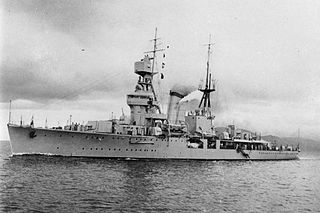 W
WNing Hai was a light cruiser in the Republic of China Navy (ROCN) before World War II and the lead ship of her class. She was sunk in the early days of the Second Sino-Japanese War by aircraft from the Imperial Japanese Navy, and her wreck was raised and repaired by the Japanese, re-entering service with the Japanese Navy in the Pacific War as the escort vessel Ioshima (五百島). She was sunk again in September 1944 by a USN submarine.
 W
WNoshiro (能代) was an Agano-class cruiser which served with the Imperial Japanese Navy (IJN) during World War II. She was named after the Noshiro River in Akita Prefecture in northern Japan.
 W
WOrion (HSK-1) was an auxiliary cruiser of Nazi Germany's Kriegsmarine which operated as a merchant raider during World War II. Built by Blohm & Voss in Hamburg in 1930/31 as the freighter Kurmark, she was requisitioned by the navy at the outbreak of World War II and converted into the auxiliary cruiser Orion, commissioned on 9 December 1939. Known to the Kriegsmarine as Schiff 36, her Royal Navy designation was Raider A. She was named after the constellation Orion.
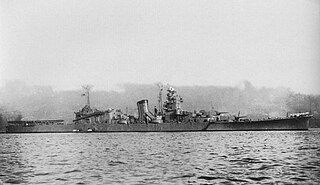 W
WŌyodo (大淀) was a light cruiser built for the Imperial Japanese Navy (IJN) during World War II, and was the only ship of her class completed before the end of the war. Designed to command submarine operations, she was obsolete upon completion in 1943. The ship was used as a transport and to escort the navy's capital ships for the rest of the year. Ōyodo was lightly damaged by American aircraft in early January 1944 during one transport mission and returned home several months later to begin conversion to serve as the flagship of the Combined Fleet.
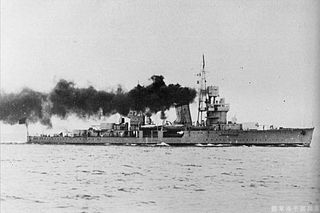 W
WPing Hai was a light cruiser in the Chinese fleet before World War II and the second ship of the Ning Hai class. The ship was laid down in China to the specifications supplied by the Japanese, and Japanese advisors were hired to oversee the construction. Compared to its sister ship Ning Hai, it had a lower-output powerplant and lacked seaplane facilities. Its anti-aircraft armament was also different from that of its sister.
 W
WHMS Southampton was a member of the first group of five ships of the Town class of light cruisers. She was built by John Brown & Company, Clydebank, Scotland and launched on 10 March 1936.
 W
WHMS Spartan was a Dido-class light cruiser of the Bellona subgroup of the Royal Navy. She was a modified Dido design with only four turrets but improved anti-aircraft armament - also known as Dido Group 2. She was built by Vickers-Armstrongs, with the keel being laid down on 21 December 1939. She was launched on 27 August 1942 , commissioned on 12 July 1943 and completed on 10 August 1943.
 W
WSMS Strassburg was a light cruiser of the Magdeburg class in the German Kaiserliche Marine. Her class included three other ships: Magdeburg, Breslau, and Stralsund. Strassburg was built at the Kaiserliche Werft shipyard in Wilhelmshaven from 1910 to October 1912, when she was commissioned into the High Seas Fleet. The ship was armed with a main battery of twelve 10.5 cm (4.1 in) SK L/45 guns and had a top speed of 27.5 knots.
 W
WTokiwa (常盤) was the second and last Asama-class armored cruiser built for the Imperial Japanese Navy (IJN) in the late 1890s. As Japan lacked the industrial capacity to build such warships herself, the ship was built in Britain. She played minor roles in the Boxer Rebellion of 1900 and World War I, but was very active during the Russo-Japanese War of 1904–05 where she participated in the Battle of Port Arthur, the Battle off Ulsan, and the Battle of Tsushima. After the war she was sometimes used as a training ship for naval cadets.
 W
WTone was a protected cruiser of the Imperial Japanese Navy. The ship was named after the Tone River in Tokyo.
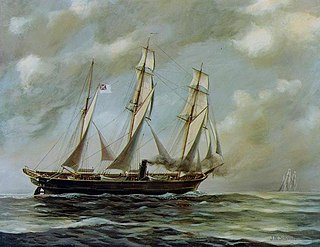 W
WTornado was a bark-rigged screw steam corvette of the Spanish Navy, first launched at Clydebank, Scotland in 1863, as the Confederate raider CSS Texas. She is most famous for having captured the North American filibustering ship Virginius, which led to the "Virginius Affair", which afterwards led to the Spanish-American Crisis of 1873.
 W
WTrieste was the second of two Trento-class heavy cruisers built for the Italian Regia Marina. The ship was laid down in June 1925, was launched in October 1926, and was commissioned in December 1928. Trieste was very lightly armored, with only a 70 mm (2.8 in) thick armored belt, though she possessed a high speed and heavy armament of eight 203 mm (8.0 in) guns. Though nominally built under the restrictions of the Washington Naval Treaty, the two cruisers significantly exceeded the displacement limits imposed by the treaty. The ship spent the 1930s conducting training cruises in the Mediterranean Sea, participating in naval reviews held for foreign dignitaries, and serving as the flagship of the Cruiser Division. She also helped transport Italian volunteer troops that had been sent to Spain to fight in the Spanish Civil War return to Italy in 1938.
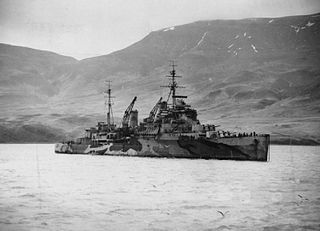 W
WHMS Trinidad was a Royal Navy Crown Colony-class cruiser. She was lost while serving in the Arctic on convoy duty after being damaged escorting PQ 13 in 1942.
 W
WYahagi (矢矧) was an Agano-class cruiser which served with the Imperial Japanese Navy (IJN) during World War II.
 W
WYat Sen, named after the founding father Dr. Sun Yat-sen of the Republic of China and completed in 1931, was a light cruiser— having more in common with the small cruisers of pre–World War I era—in the ROC Navy before World War II. An enlarged design was laid down but never completed due to the Japanese occupation of Kiangnan shipyard.
 W
WYing Rui was a cruiser built for the Imperial Chinese Navy, which served with the Republic of China Navy. She was built by Vickers Limited in Barrow-in-Furness, England. She was one of three Chao Ho class protected cruisers built, although each one was to different specifications. Initially designated as a training vessel, she saw action at Amoy during the Warlord era, before returning again to her training role.